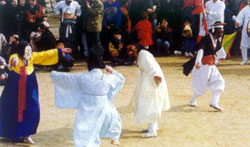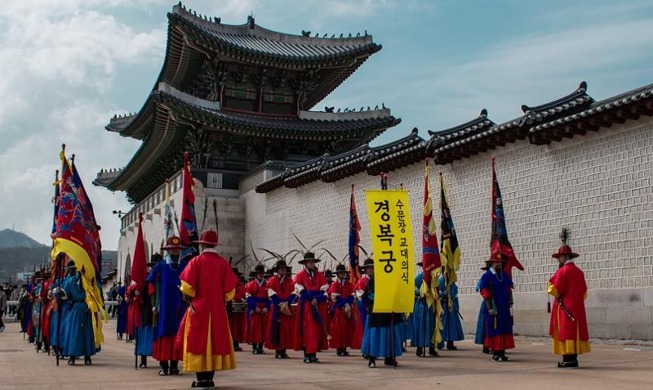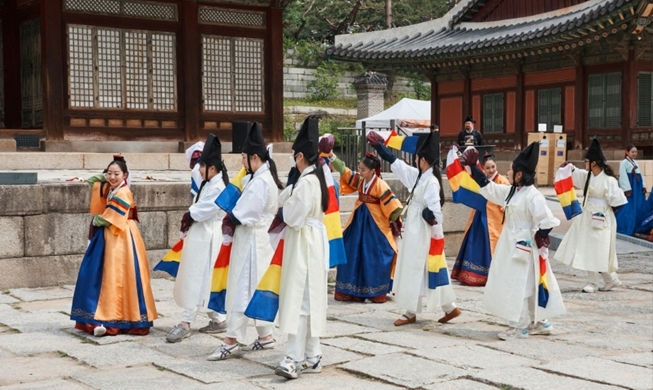-
 Korea.net's 24-hour YouTube channel
Korea.net's 24-hour YouTube channel- NEWS FOCUS
- ABOUT KOREA
- EVENTS
- RESOURCES
- GOVERNMENT
- ABOUT US

The mask play of Hahoe Byeolsingut Exorcism itself, performed first by merchants in Andong Hahoe Village around mid 12th century is designated as a major intangible cultural asset No.69.
Hahoe Village, a clan village of the Pungsan Ryu family, preserves the traditional Korean way of life. The entire village has been designated as an Important Folk Asset No.122. The mask dance performance has been performed to wish for much happiness and a good harvest for the village.
Event Programs: Byeolsingut Exorcism means an unusual and uncommon form of exorcism. In an agricultural society, a good harvest was considered to be the key factor of the village's survival and the villages performed a sacrificial rite to pray to the heavens for an ever-lasting and bountiful harvest.
As an act of incantation, the mask dance is made up of 10 episodes with a satirical story of former nobleman.
The 10 episodes include: the ‘Gang Shin Episode' (an invocatory rite of a would-be medium), the ‘Mudong Episode' (the doll bride enters the stage), the ‘Juji Episode' (Juji is an imaginary animal), the ‘Butcher Episode' (a character butchers a cow without any hesitation), the ‘Granny Episode' (the sorrow and joy of the lives of the public can be felt), the ‘Depraved Monk Episode' (it satirizes the depraved bonzes and Buddhism at the end of the Goryeo dynasty), the ‘Nobleman Episode' (it satirizes the hypocrisy and affectation of former noblemen), the ‘Dang Je' (a ritual service for putting God back in his first place), the ‘Wedding Episode' (the doll bride and the scholar marry) and the ‘Bridal Room Episode' (it describes their honeymoon).
Major Highlights: Each episode starts with the exciting drum sound that could make the audience dance excitedly during the performance. Meanwhile, Andong Soju (Korean alcohol) Museum in the village is opened everyday and provides group tours a chance to make and sample soju. Visitors also can make Hanji (Korean Paper) themselves located at the corner of the village.












